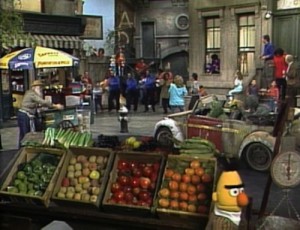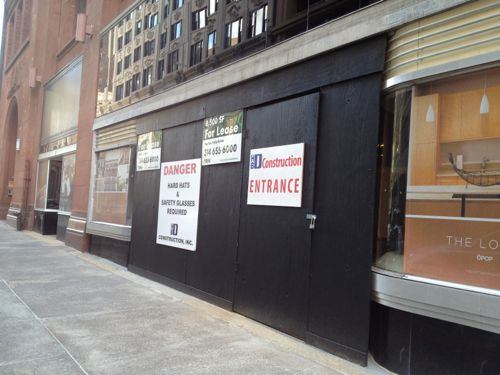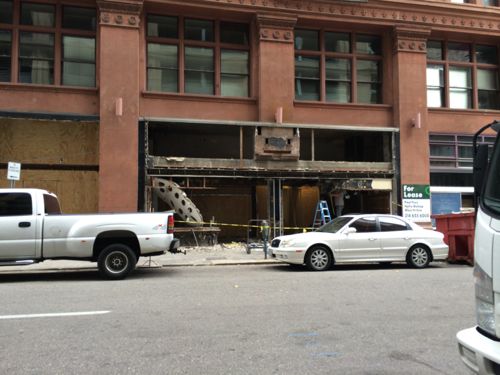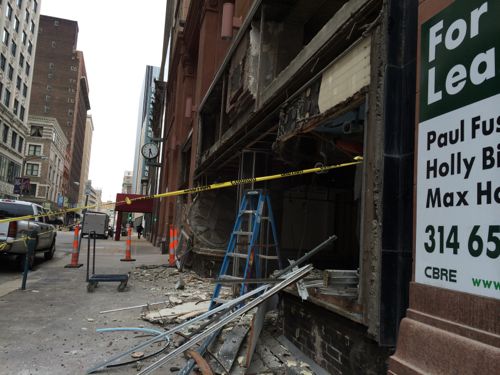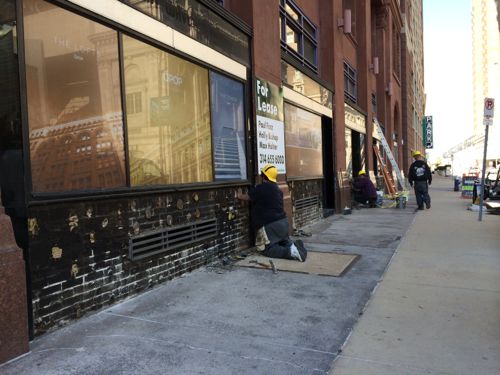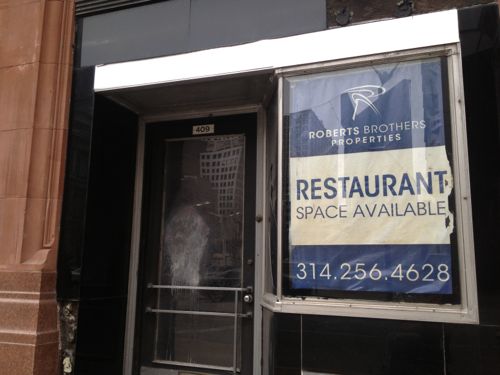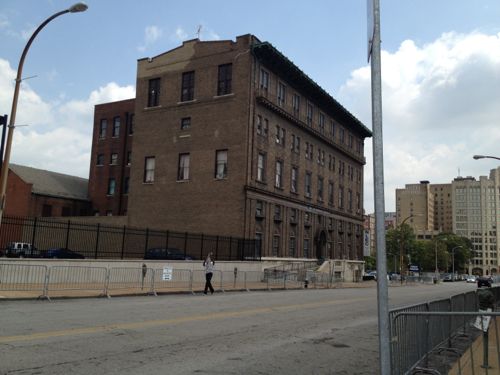Fifth Anniversary of the Gateway Transportation Center 2008, Future High-Speed Rail to Chicago’s O’Hare Airport
|
|
During the last five years Amtrak has seen a steady increase in ridership.
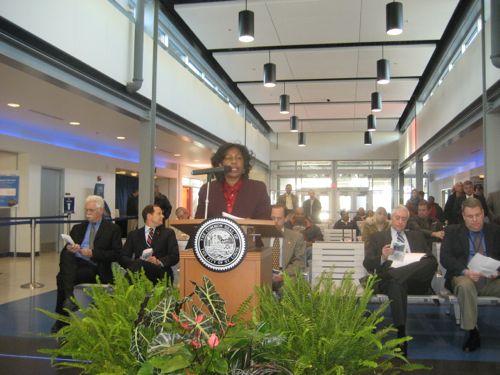
The timing was perfect, although Amtrak’s FY 2009 showed a dip in ridership from 2008, it was still above 2007 levels.
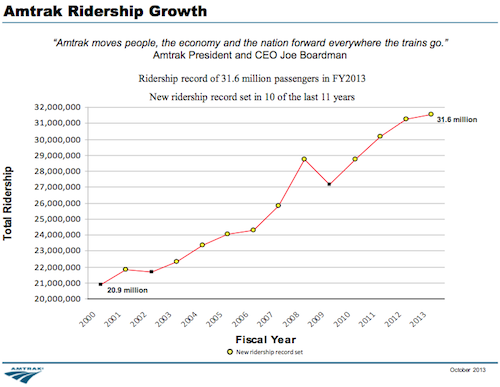
I’ve taken trains out of this station five times now: Kansas City (x2), Jefferson City, Bloomington-Normal, Dallas. Bloomington-Normal was Memorial weekend 2012, our station was way too small for all the rail & bus passengers that weekend. The trip to Dallas was in July 2012, I continued to Fort Worth & Oklahoma City on Amtrak, returning to St. Louis via Greyhound bus.
Thinking about this post I was curious how our station compared to others in Missouri, Illinois, and nationally. Turns out St. Louis had more than double the traffic as the #2 station in Missouri, Kansas City.
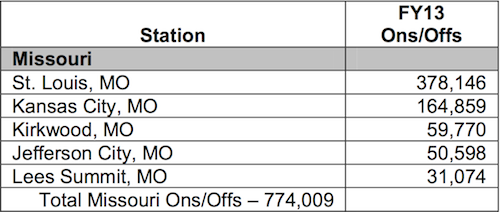
Amtrak serves 46 of the 48 continental United States, no service to Wyoming or South Dakota. Of the 46 states served, and the District of Columbia, Missouri ranked 18th in FY13, Illinois 4th.
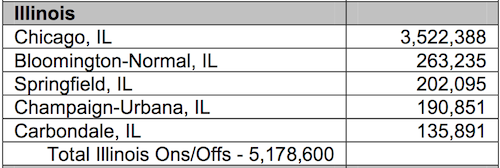
Clearly, our proximity to Chicago doesn’t hurt. Plus, Missouri and Illinois have both been making track upgrades which have resulted in reduced travel time. Amtrak spokesperson Marc Magliari told me the usage at the St. Louis station “has exceeded expectations.”
The Lincoln Service between Chicago and St Louis saw a 10 percent jump in passenger count, for the largest increase for any route in Illinois. It also saw a 22 percent jump in revenue. (Source)
The St. Louis station took years to be planned, funded, and opened. Now we need to plan a facility to handle high-speed rail traffic. How will a high-speed train cross the Mississippi River, a new rail bridge? Could it serve the region from a location on the Illinois side, or must it cross into Missouri? You think I’m dreaming, but I’m not:
The study concluded that a 220-mph HSR service from O’Hare Airport through downtown Chicago to Champaign-Urbana and on to St. Louis and/or Indianapolis is feasible and would be likely to cover its operating costs without subsidies. Express high-speed trains would travel from downtown Chicago to Champaign in approximately 45 minutes, to Springfield in approximately one hour and twenty minutes and to St. Louis or Indianapolis in approximately 2 hours. The study assumed that trains would run every half-hour during peak times and hourly at other times. The economic analysis of the HSR system showed potential substantial benefits to Illinois, including the creation of 409,000 to 792,000 job-years during five years of construction and creation of 10,890 to 13,820 jobs per year during the first 10 years of operation. In addition, analyses of several different cost and revenue scenarios indicated that the HSR system is expected to be operationally profitable. However, as with many large public transportation projects, the initial cost to build it is substantial and would require public and/or private sector funding to cover the initial capital cost.
Various public-private partnerships (PPP) have been successfully used to finance HSR overseas and the viability of adapting these to the US environment should be explored. An incremental or blended approach completed over a longer time period would reduce initial capital costs and provide other nearer-term transportation benefits, while simultaneously improving intercity transportation quality and travel times. This is similar to the approach commonly used internationally and should be studied further. (UIUC w/links to study)
Two hours to Chicago? Count me in!
— Steve Patterson
